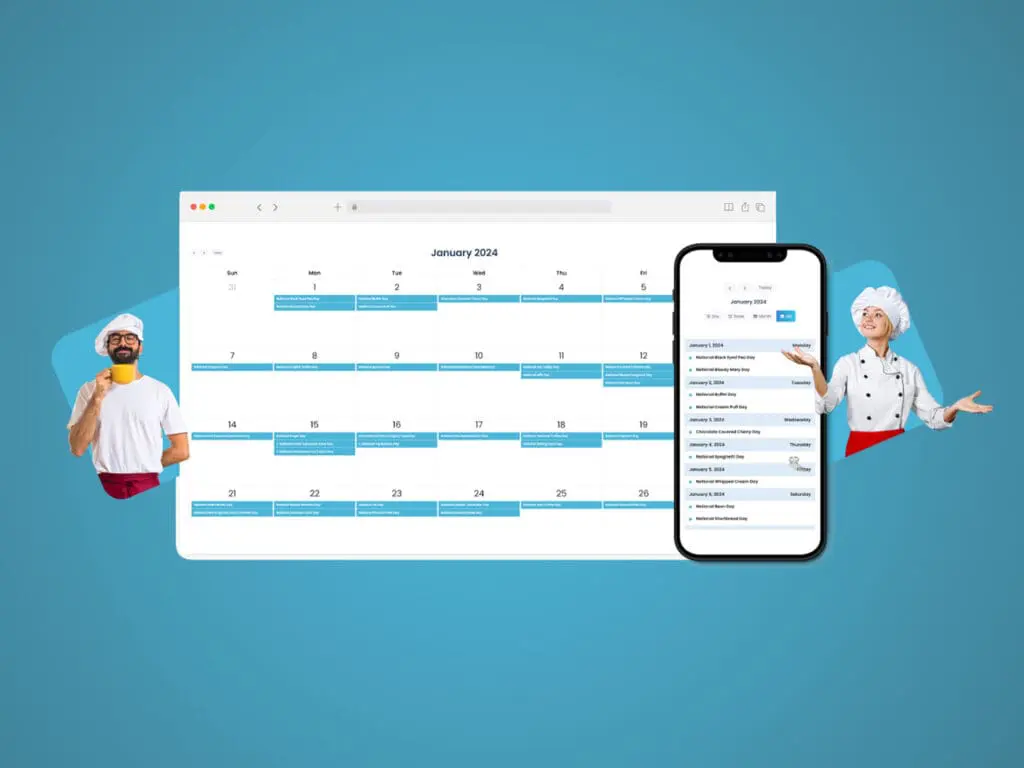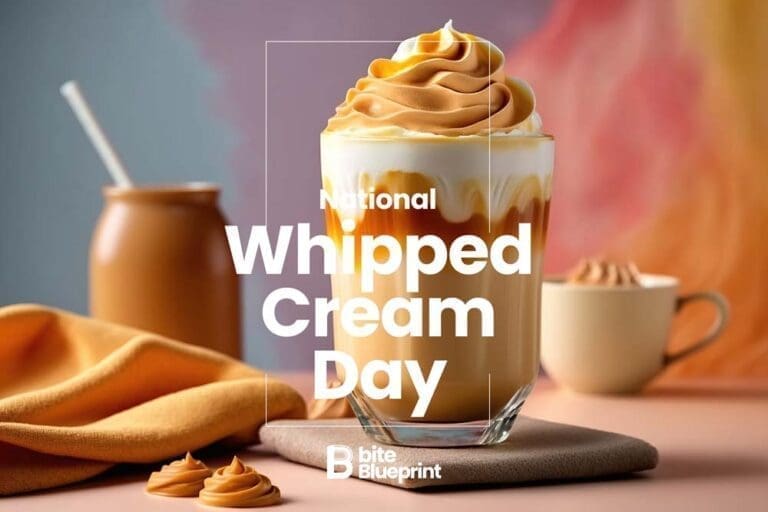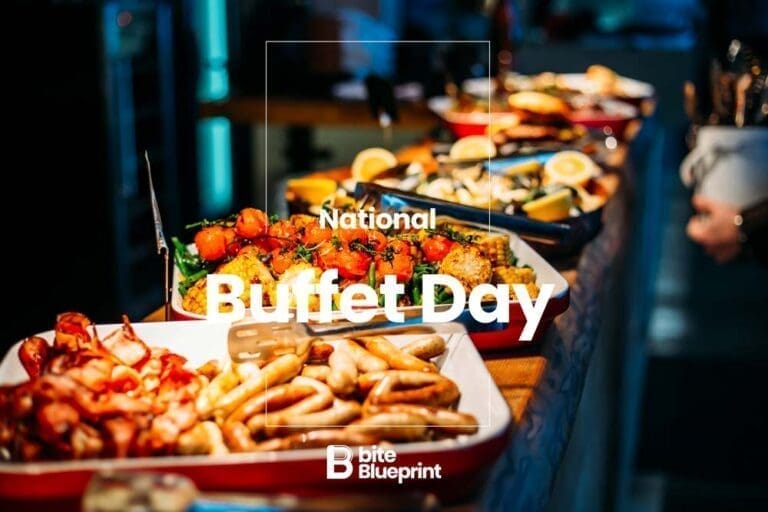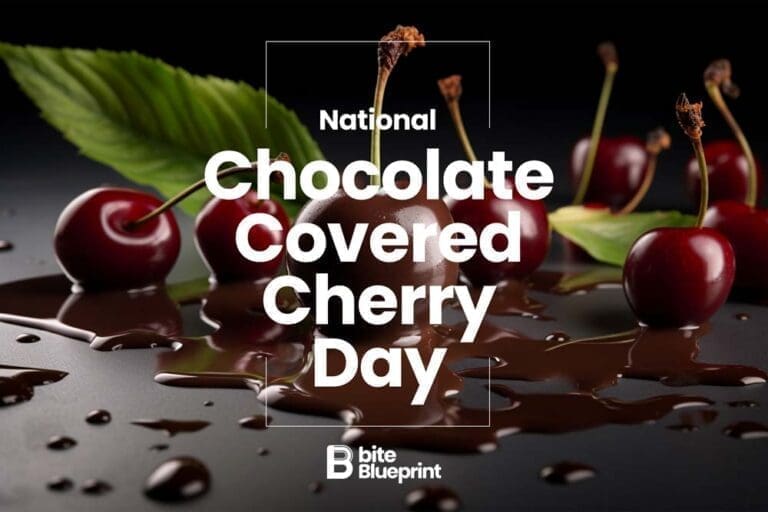The rise of technology and the digital era has made social media a key tool for businesses worldwide. This is especially true for the food industry, where social media marketing, or SMM marketing as it’s commonly known, holds the power to reach millions of potential customers. It can create a strong brand identity and engage directly with consumers. As a food business owner, mastering the nuances of social network marketing is essential. This skill can significantly boost your business’s reach and profitability.
This blog is tailored for you, a food business owner. It delivers eight compelling social media marketing and promotion strategies to speed up your business growth. We will introduce a specially designed digital product, the “National Food Holidays Calendar.” This can be a valuable tool in your marketing through social media arsenal.
The “National Food Holidays Calendar” is a comprehensive calendar that lists all daily and monthly food holidays. This calendar covers everything from National Pizza Day to International Chocolate Day. It’s an essential tool for effective social media en marketing, keeping you informed about potential promotions captivating food enthusiasts worldwide.
The Importance of Social Media in Food Business Promotion
In the current digital era, social media platforms have become powerful tools for promoting food businesses. They offer a dynamic and interactive platform for businesses to showcase their products and engage with customers. This ultimately drives sales. If you’re looking for a social media marketing agency, consider the success stories of Levain Bakery and Starbucks. Both have used platforms like Instagram and Twitter to effectively engage with customers and promote their products.
Eight Social Media Marketing & Promotion Strategies for Your Food Business

Strategy 1: Utilizing Food Industry Promotions
The food industry is a highly competitive landscape. The fight to attract new customers and keep existing ones engaged is always present. The key to winning this battle is a robust promotional strategy. Food industry promotions offer an almost magical way to spark interest and drive sales. From restaurants to food manufacturers, they create a buzz around your brand.
Promotions showcase your brand and its offerings. They also provide a vital opportunity to connect with customers on a deeper level. First, a customer transitions from merely knowing about your brand to actually experiencing it. Knowing that a restaurant serves the best burgers in town is a separate matter. Being invited to enjoy that burger at a discounted rate is another. This is the power of promotions.
These are the top-rated promotions that you can certainly take advantage of:
- “Buy One, Get One Free” or BOGO: This is a classic and highly effective promotion strategy. It is compelling because it offers immediate value to the customer. It’s hard to resist the idea of getting two for the price of one. This promotion not only drives sales but also helps to clear inventory.
- Happy Hour Specials: These are particularly popular in restaurants and bars. Offering discounted food and drink items during specific hours can significantly increase foot traffic during slower business hours.
- Limited-Time Offers: This creates a sense of urgency and can motivate customers to purchase. These promotions, whether they’re seasonal menu items, special discounts, or holiday-themed specials, can stir up excitement. They can prompt customers to visit before they miss out.
- Loyalty Programs: Rewarding returning customers with points, free items, or discounts is a compelling promotion that encourages repeat business. It gives customers a reason to choose your business over a competitor.
- Bundle Deals: Offering a group of items together at a lower price than if purchased separately is another attractive promotion. It is particularly effective when you bundle a high-margin item with a high-demand item.
- Sampling: Allowing customers to try a product for free reduces risk and can create a preference for your product. Free samples can lead to increased sales, particularly if the product is new to the market or different from what’s typically offered.
- Early Bird Specials: Offering discounts to customers who dine during off-peak hours is a fantastic way to boost sales during slow times.
With more people online than ever before, there’s a huge potential audience waiting to be reached through digital marketing. For a real-world example of how powerful this can be, check out this case study on how Domino’s revolutionized pizza delivery with digital marketing.
Food industry promotions do more than just drive sales. They are strategic tools used to foster brand loyalty and attract new customers. Not only that, they engage your existing clientele and shape the future growth of your brand. Whether you’re running a small cafe, a bustling restaurant, or a worldwide food production doesn’t matter. A well-planned promotional strategy is key. It’s your key to success.
Strategy 2: Harnessing the Power of Food Holidays
Food holidays offer a fantastic and innovative way to boost awareness and sales for your food business. Take advantage of the “National Food Holidays Calendar.” It will let you align your marketing strategies effectively. If you own a pizza joint, think about the buzz on National Pizza Day. The potential to attract more customers is huge!
The beauty of this calendar is that it gives you the power to plan your strategies well in advance. You’ll never miss out on a food holiday. Draft your promotion and communications ahead of time to ensure you’re fully prepared to leverage these unique opportunities.
Plus, you are not restricted to promoting only the type of food that is your specialty. Let’s say you own a bakery, but why stop at National Donut Day? Celebrate National Coffee Day by introducing a special coffee blend. Also, consider offering a discount on coffee with every pastry purchased. This not only broadens your product range but also serves to attract a wider customer base.
Incorporating food holidays into your marketing tactics is a strategic move. It allows you to create fresh, engaging, and topical content that resonates with your audience. It’s all about creating a sense of excitement around your brand. Use these food holidays to boost your business’s competitive edge. You’ll see your customer engagement and sales soar!
Strategy 3: Engaging with Your Audience
Engaging with your audience is not just a pleasant activity. It is absolutely fundamental to building a loyal customer base. Today’s customers want to feel seen, heard and appreciated. They want to know that the companies they support care about them, their needs, and their opinions. And, in the digital age, it’s easier than ever to give them that sense.
Responding to comments is one of the most compelling ways to engage with your audience. Acknowledge all comments, be they positive or adverse. Show your audience that you’re actively listening. This isn’t just about damage control or self-praise. It’s key to show customers that their feedback matters to you.
Furthermore, liking customer posts and sharing user-generated content are great strategies for audience engagement. Liking a customer’s post is a small but powerful act. It makes them feel seen and valued. Sharing user-generated content is another strategy. It invites more customer engagement with your brand. This also provides valuable content for your own platforms.
Social media marketing doesn’t have to be a daunting task. There are many tools available, such as Hootsuite or Buffer, that can streamline the process for you. These platforms let you schedule posts, track engagement, and monitor your social media accounts all from one place. They can save you time, keep you organized, and help you stay on top of your social media game.
Strategy 4: Running Social Media Contests
Social media contests are a fantastic tool for businesses. They can effectively engage your target audience and boost brand visibility. You can launch anything from a simple photo contest to a complex recipe contest. Remember, the possibilities are endless and only limited by your creativity.
These contests are more than just winning prizes. They create a buzz around your brand and make it more relatable. They foster a sense of community among your followers. This leads to better brand recognition, improved customer loyalty, and increased sales and profits.
Running a social media contest can seem daunting at first. Nonetheless, platforms like Woobox or Rafflecopter are available to simplify the process. These tools expertly manage all aspects of the contest. This includes entry collection and winner selection, ensuring an efficient, seamless execution.
With their assistance, you can put your energy into the creative aspects of the contest. Let them manage the technical details. We live in a digital world where presence is key. Social media contests can elevate your brand, making it stand out and leaving a memorable impression.
Strategy 5: Collaborating with Influencers
Influencer collaborations can be a transformative tool for your brand, catapulting your visibility and propelling you to new heights. This marketing strategy has repeatedly proven its efficacy. But, it’s important to remember that it’s not a one-size-fits-all approach. You need to identify social influencers who not only mirror your brand values but also speak your brand language fluently. These influencers should have a deep connection with your target audience.
The partnership between your brand and the social influencer should be seamless, almost like a harmonious marriage where the values of both parties align perfectly. Together, your brand and the influencer must narrate a cohesive story, a story that resonates with your audience. When this happens, that’s when the magic truly begins and big growth is realized.
But, it’s equally crucial to know when to draw the line. Not every social influencer out there is the right match for your brand. If the influencer’s audience demographics don’t align with your target audience, reconsider the partnership. If their values don’t mirror yours, it’s advisable to steer clear of such a collaboration. A wrong influencer partnership can do more hurt than good by diluting your brand message and confusing your audience.
Choosing wisely is paramount. Always keep your brand’s integrity and target audience at the forefront of your decisions. Influencer marketing isn’t just about reaching more people. It’s about reaching the right people in the right way with the help of the right social influencer.
Strategy 6: Sharing Your Winning Recipe
Sharing your winning recipe could be a fantastic tactic to both engage your audience and boost your business. This strategy can foster a strong sense of community among your customers and increase their connection to your brand. It can even encourage them to try making your dishes at home, resulting in increased product consumption.
Take Ben & Jerry’s, for example. This well-known ice cream company often shares recipes incorporating some of their most beloved ice cream flavors. This ingenious maneuver keeps their audience engaged. Followers often share their own attempts at recreating these recipes, engage in conversations, and even recommend them to friends. At the same time, this strategy serves as a compelling promotional tool for their products. When someone sees a delicious recipe requiring a specific Ben & Jerry’s flavor, they are likely to purchase it. They buy it to try their hand at the recipe.
Sharing your winning recipe can be a highly compelling social media and marketing to engage your audience and promote your business. This strategy fosters a sense of community around your brand. It also drives product consumption and reinforces the brand image. So, why not try sharing your winning recipe today and see the benefits for yourself?
Strategy 7: Creating Engaging Content
Creating engaging content is essential in social media marketing. It’s a must-have in any social media strategy. Quality trumps quantity every time, and this is especially true when it comes to social media content.
First and foremost, you need high-quality images. These days, everyone is a photographer thanks to smartphones, but not all images are created equal. Be selective in the images you choose to share on your social media channels. They should be clear, well-lit, and visually appealing. They should also be relevant to your content and resonate with your audience.
Next, compelling captions are key. A picture may be worth a thousand words. Yet, a well-crafted caption can add depth and context to your image. It can also stimulate engagement, encourage sharing, and drive action. So, don’t underestimate the power of words.
Engaging videos is another key element. As video consumption continues to skyrocket on social media, you can’t afford to ignore this powerful medium. Still, creating high-quality videos requires more than just hitting the record button. You need to consider aspects like lighting, sound, and editing to ensure a high-quality output.
Lastly, take advantage of tools like Canva and Adobe Spark. These platforms can help you create visually appealing content without the need for a graphic design degree. They offer a plethora of templates, images, and graphics that you can customize to suit your brand’s aesthetic.
Remember, the goal is to create content that resonates with your audience. It should spark conversations and ultimately drive action. So, put the time and effort into creating high-quality, engaging content. Your social media presence will thank you for it.
In your journey to mastering social media engagement, don’t forget about the power of email marketing. It’s a proven strategy for enhancing customer loyalty, and many major brands incorporate it into their marketing mix. For instance, Subway, a global fast-food giant, has leveraged email marketing in a unique way to keep its customers coming back. Want to know how they did it? Visit this link to learn how Subway utilized email marketing to boost customer loyalty: Enhancing Customer Loyalty Through Email Marketing: An Insight into Subway’s Strategy. This knowledge, coupled with your engaging social media content, can provide a comprehensive approach to your digital marketing efforts. Trust me, it’s worth your time!
Strategy 8: Utilizing Paid Advertisements
Paid advertisements are a potent tool in any business’s marketing arsenal. They have the power to significantly expand your brand’s reach. It places your products or services before a wider audience than you could organically achieve. The result? Enhanced business visibility, increased brand recognition, and ultimately, more sales.
The great thing about platforms such as Facebook and Instagram is that they provide access to targeted advertising. This means you’re not simply throwing your ads into the void and hoping for the best. Instead, you can accurately define your audience based on demographics, interests, behaviors, and more. This makes your advertising efforts highly efficient. It allows you to reach the specific audience most likely to engage with your brand.
but, it’s key to note that paid advertisements should not be utilized haphazardly. It’s not a matter of just paying for ads and expecting instant results. Rather, they should be used strategically to maximize their impact. For instance, consider deploying them during product launches or special promotions. Times like these are when your brand is likely to pique interest. A well-placed ad can effectively seize this attention, driving conversions and enhancing your bottom line.
Remember, paid advertisements are not a magic bullet. They require careful planning, strategic deployment, and constant optimization. But, when used correctly, they can be a powerful component of your marketing strategy, driving visibility, engagement, and sales. So, why not explore the potential of paid advertisements for your business? The opportunities are vast, and the rewards can be significant.
The Role of “National Food Holidays Calendar” in Your Marketing Strategy

Incorporating the “National Food Holidays Calendar” into your social media marketing strategy is a game changer. With this calendar, you can plan your content and promotions in line with various food holidays. This ensures your content is timely and resonates with your audience.
Imagine creating special promotions or limited-time offers on these food holidays! Not only does this drive sales, but it also increases customer engagement. Even better, themed content around these holidays can engage your audience more and boost your brand visibility.
In essence, the “National Food Holidays Calendar” is more than just a calendar. It’s a powerful tool that can significantly elevate your social media presence and drive your business growth. You can’t afford to ignore it. Take advantage of this tool and watch your brand thrive.
Conclusion
The power of social media in business promotion is undeniably immense. Harness the power of innovative strategies to elevate your food business. Engage in captivating contests, collaborate with social influencers, and leverage the “National Food Holidays Calendar” to significantly boost your visibility and sales.
The “National Food Holidays Calendar” serves as an invaluable tool in planning your marketing strategies. This calendar allows you to align your promotions with relevant food holidays, ensuring your marketing efforts resonate effectively with your audience.
We encourage you to leverage these strategies and the “National Food Holidays Calendar” to boost your food business. Remember, understanding your audience and creating engaging content is key to successful social media marketing. It’s also essential to maintain a consistent presence.



